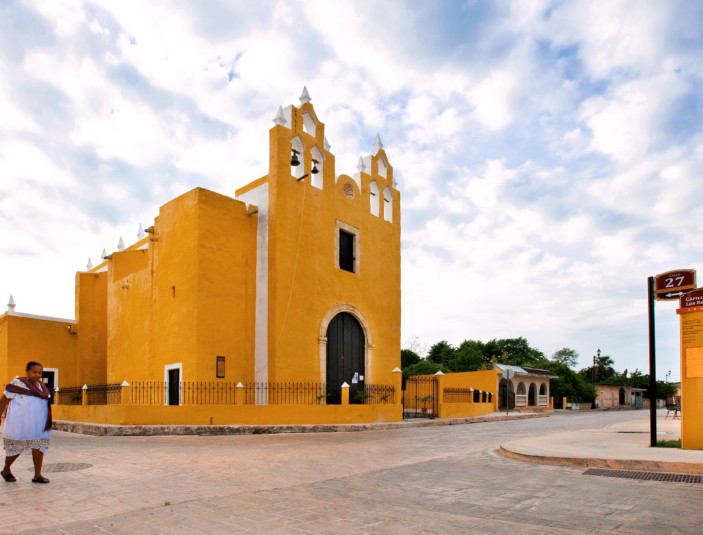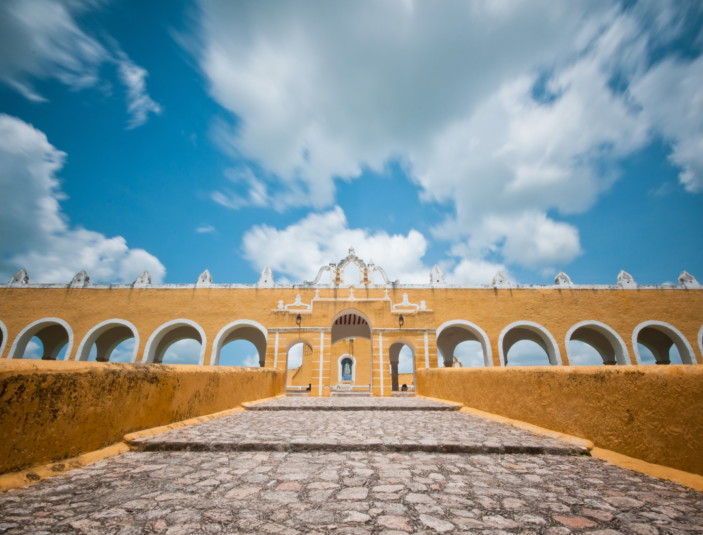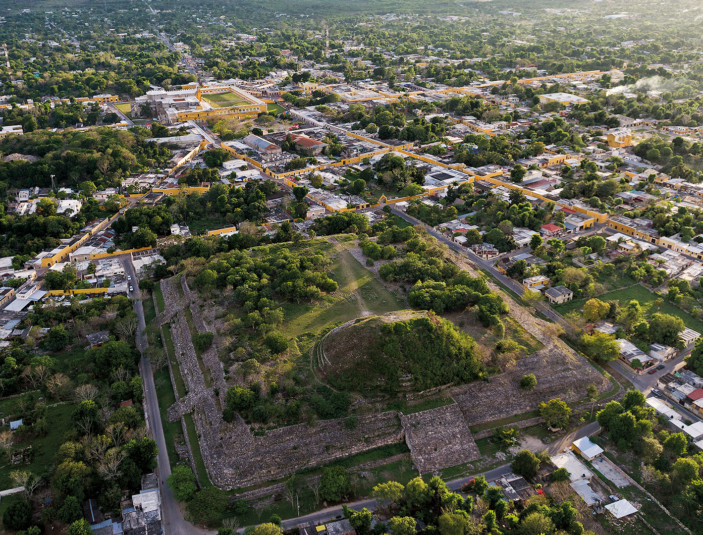About
Known as the City of the Three Cultures, today it is the essence of the cultural legacy of the Yucatecan people. In this site there are Mayan temples and colonial houses that transport to the XVI, XVII and XVIII centuries, and its people proudly show the cultural syncretism of the Mayan people.
Currently, most of its historic buildings and houses are painted yellow and white by the will of authorities and neighbors, which maintains an image of elegance and charm of past times that distinguish and define it with a stately air in the regional context.
In its neatly stamped streets, horse-drawn carriages take visitors on a charming tour of its squares, parks and historic suburbs. At night, the city offers a singular experience, contemplating a starry celestial vault cut out by the profiles of its pyramids, temples and colonial mansions; shadows that seem to awaken from a centuries-old dream.
With its yellow and white buildings, reminiscent of the colors of the flag of the Holy See, and its monastery dedicated to one of the pillars of the Franciscan Order, San Antonio de Padua, it is now the most important Marian center for Yucatecan Catholics.
Thanks to its rich history and cultural significance, Izamal was declared a Magical Town of Mexico in 2001.
 Remedios Chapel
Remedios ChapelRemedios Chapel
In its neatly stamped streets, horse-drawn carriages take visitors on a charming tour of its squares, parks and historic suburbs. At night, the city offers a singular experience, contemplating a starry celestial vault cut out by the profiles of its pyramids, temples and colonial mansions; shadows that seem to awaken from a centuries-old dream.
With its yellow and white buildings, reminiscent of the colors of the flag of the Holy See, and its monastery dedicated to one of the pillars of the Franciscan Order, San Antonio de Padua, it is now the most important Marian center for Yucatecan Catholics.
Must-sees
 Convent of San Antonio de Padua
Convent of San Antonio de PaduaConvent of San Antonio de Padua
This is one of the most important and majestic buildings in Mesoamerica. It is located on the plateau of the main hill of the city. It is climbed by means of three ramps built on its free sides. Inside the temple there is a beautiful baroque style altarpiece, covered with gold plating. It shows scenes representing “The Death of Jesus”, “The Birth”, “The visit of the Virgin to Saint Elizabeth” and “The visitation of the angel to Mary”. In the lower part, there are niches that allow observing the images of “Saint Lucia”, “Saint Anthony”, “Saint Francis” and “Saint Joseph”.
In the lower part, there are niches that allow to observe the images of “Santa Lucía”, “San Antonio”, “San Francisco” and “San José”. In the upper part, it is represented “the Coronation of the Virgin as Queen of Heaven” and below, the image of the Virgin of the Immaculate Conception, sculpture that was brought by Fray Diego de Landa from Guatemala, which also has a simple rail system that communicates with the Camarín, space where the faithful believers show their faith and devotion.
 Kinich Kakmó Pyramid
Kinich Kakmó PyramidKinich Kakmó Pyramid
It means “Fire Macaw with Solar Face”. It is interpreted that the Mayas believed that the god Kinich came down in the blaze of the midday sun, to burn and therefore purify the sacrifices or offerings taken to the Mayan pantheon, using the form of a macaw. It is the largest in surface of the Yucatan Peninsula and the third largest in Mexico after the one of the Sun in Teotihuacan and Cholula in Puebla.
